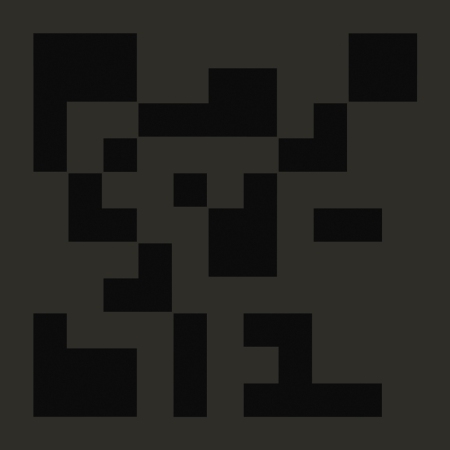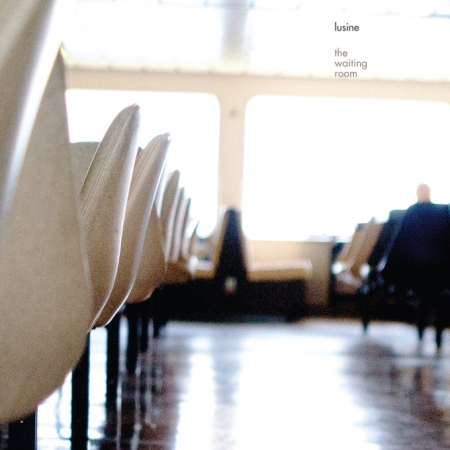London duo Sean Booth and Rob Brown are entering their 20th year together under the alias of Autechre, an electronic music outfit that over the last two decades has shaped and permanently altered the electronic scene, creating genre defining albums in IDM with their early releases (Incunabula, Amber) before taking and breaking the paradigms they themselves had forged with later albums in the 2000’s, most notably the highly controversial, highly experimental Quaristice. And that is Autechre in a nutshell; a mysterious and ever sonically shifting pair that have continuously sought to redefine the limits of the genre’s they rooted themselves in and helped to shape.
It’ll come as no surprise to most people then that Exai has not taken regressive steps and returned to the, shall we say, more palatable sounds from their earlier releases but instead continued along the lines of Quaristice and previous album Oversteps as it fuses big electronic beats with much stronger Glitch and experimental overtones in this 2 hour, 17 track behemoth. By no means do Booth and Brown provide incentives for people to listen to their fantastical creations, but at this point I don’t think it matters; Autechre have an incredibly strong fan base who will continue to listen to their releases no matter what. Indeed, I was less concerned about the potentially radical sounds within and moreso the sheer quantity of music it contains.
Like their other releases, Exai also shares some allusions and references in its odd titling to its place in their discography; Exai = X I (say it out loud), or 11 in Roman Numerals, and yes, this is their 11th full length release. Other albums with this sequential referencing consist of Amber (second colour of traffic lights), Quaristice has the catalogue number Warp333 (3×3 = 9), Untitled has 8 characters in it, and so on, you get the idea. Much like their close relation Aphex Twin, Autechre have lots of subtle references within their music that extend beyond the bizarre and inane track titles.
Yet that seeming randomness, that apparent inanity within the track titles, seems to be replicated in the content of the music itself; cascades of syncopated electronic beats along with randomly introduced noise and glitch undercurrents create an album overwhelming in its lack of cohesion and utterly indigestible in its entirety. Oversteps back in 2010 was my introduction to the Autechre sound and I thought that was something not easy to approach, somewhat lacking cohesion and jumping track frequently, but it has nothing on Exai‘s chaos. I’m struggling to even work out where to begin.
There actually is a huge amount of content to enjoy here, for those so inclined; much of the interior has the best to offer with a number of tracks at the album’s heart forming some of my favourites. This is probably more due to their Oversteps throwbacks with much more deliberate beat laden elements, like the lengthy”bladelores” forging acid riffs with bold, precise IDM beats and spinning out its carefully crafted indecision for 12 whole minutes, balancing it out with more ambient and drone intermissions. In a similar vein is the earlier “T ess xi”, with a much older and retrospective sound that could have come from the now-ancient Tri-Repeatae or similar, with its 90’s keyboard component. This more minimalist approach is somewhat atypical of the album as a whole though; just a few tracks before we are assaulted with the wet synths and rolling glitch beats of the odd “Flep” and its more bass-heavy twin “vekoS” before “tuinorizn” helps us to bridge the gap between dark and light.
The early album is still notable however, with opener “Fleure” driving home some Acid tunes and melting the keyboard textures below, taking little time to introduce us (possibly inaccurately) to the weird and wonderful world of Exai. But this mean, abrasive introduction is short lived, collapsing under its own experimentation prematurely and moving into the shifting sands of “irlite (get 0)”, a slowly evolving 10 minuter whose beats prograde into fractured, distal instrumentation and increasingly delicate ambience before the carefully measured rhythms of IDM standard “prac-f” take a darker and more low-key approach.
Perhaps the closest relative of the sound they abandoned in the last album falls with the appropriately titled “1 1 is” with its disjointed rhythms rising and falling before hitting a trough at the halfway mark and moving into some superb bassline blasts; speaker quaking pulses of energy countered with itchy noise and sharp synth ticks and warbles ride us out for 4 minutes of solid gold. It’s brilliantly huge and hard-hitting and was something of a sign of hope as I reached the mid-album. It’s chaser “nodezsh” also defines some more considered music structure, although still in that sort of crazy-paving way that Ae have going on.
I’d like to say that things perhaps get even stranger in the later album but that’s probably untrue. “spl9” rises on a bed of anxious and twitchy skittering glitch riffs and accretes over its tense 7 minute duration to a violent cacophony of confused and confusing mismatched beats and sliding, piercing textures before disappearing into a sudden and abrupt silence. Things do get surprisingly beat-orientated towards the end though with the surprisingly driven duo of “deco Loc” and the Trip-Hop reminiscent clipped drum breaks of “recks on”, but never leaving the Ae style and still coupling those deliberate rhythms with some raw noise just for the hell of it.
Really though, there is no way for me to describe in any sane and reasonable number of words the content of this album. The random musical content and arbitrary placement of tracks (leading to frequently odd juxtapositions) dont hinder this album any more than its incredible length already does, and I feel this is an album more suited and perhaps even designed for purely sampling, just picking up at any point you like and listening for any length of time as opposed to booking yourself up for 2 hours at a time. I do think it is somewhat frustrating that there isn’t a sense of logical cohesion or specific direction with the album but I can see that this is intentional. This is a cathartic release, designed to rid their system of the buildup of extraneous tracks they’ve been accumulating, some of them rather good, some with obvious emotional significance, others obviously more musical off-cuts. I promise you wont like everything here, but I think you’ll certainly find something here to enjoy if you have any love of Electronic or specifically IDM, whether its their more noisy and experimental side or perhaps the more beat focused, both are found here and like always with Autechre with an anal attention to detail, brilliant mastering and extreme precision despite the seemingly chaotic nature of it all.



You must be logged in to post a comment.